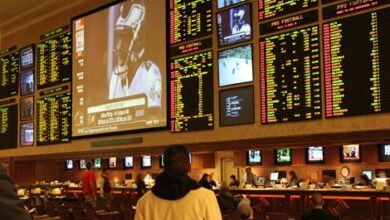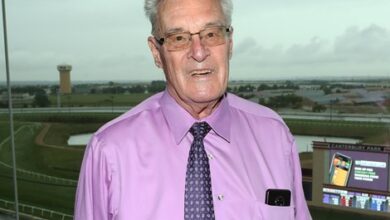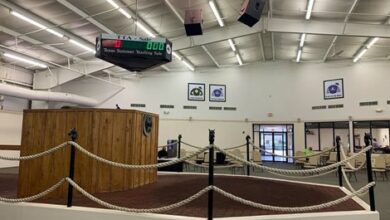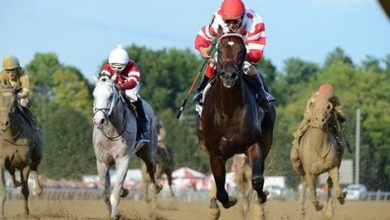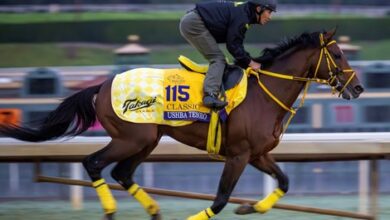Symposium: HIWU Outlines Approach to Investigations

When it comes to enforcing racing rules regarding anti-doping and medication control, the Horseracing Integrity and Welfare Unit is emphasizing new standards while working with established experts in the field to ensure integrity.
That approach was outlined by HIWU director of investigative operations Shawn Loehr during a panel discussion on regulatory investigations and integrity teams at the University of Arizona Race Track Industry Program’s Global Symposium on Racing Dec. 6 in Tucson, Ariz.
HIWU is the enforcement arm for the Horseracing Integrity and Safety Authority, which is tasked with oversight of Thoroughbred racing’s safety, anti-doping, and medication control throughout most of the country. In terms of taking advantage of expertise already in place, HIWU joined the Organization of Racing Investigators. Loehr noted the members of that group, comprised of professional horse racing investigators employed by government, police, and regulatory entities, offer hundreds of years of experience in the field.
“We’re going to utilize—not really the agency as a whole—but individual members of the ORI,” said Loehr, who noted he regularly calls ORI member (and panel member) Jason Klouser, director of enforcement for the Pennsylvania State Horse Racing Commission. “We’re looking for advice, expertise. So while we’re not working directly with their enforcement teams, individual members of ORI have been very, very helpful with us getting off the ground. I look forward to kind of expanding that in the future as well.”
In carrying out enforcement of the rules, HIWU has worked with regulatory investigators but also has added its own new wrinkles. It’s an approach Loehr believes will bring consistency.
“Pennsylvania is one (of the states) where I collaborate with the existing investigators. There’s other states where we do not have an agreement and we have built—and are continuing to build—a network of investigators to work collaboratively with those states that have an agreement as well as states that don’t,” Loehr said. “We work as a team, but the bottom line is that we have to be involved in those investigations so that the consistency with the reports, the evidence collection—really following our regulations—all occurs with the ultimate goal of if there’s a violation, our attorneys have to prosecute that.
“I have a lot of good relationships with different states. I have a liaison in each one where we have an agreement, where if they come across a violation or reach out, we give them a case number and then all the reports and paperwork gets routed up to us. So we’re working through all that. The key is creating consistency and uniformity across every state where we have jurisdiction.”
Loehr said another point of emphasis has been educating state investigators on the HIWU process to ensure any prosecution is successful.
“The key is really just making sure that our regulations are followed. They’re quite different than they were in different states,” Loehr said. “It’s educating the investigators on what we need in order to prove the case and ensuring that evidence is collected under the proper protocols—using HIWU forms, taking appropriate photographs.
“In cases of possession, it’s making sure we can actually prove that whoever we’re charging actually possessed the banned substance or the contraband. We’re tied into a very tight chain-of-custody on all seizures, documenting where we got it, how we got it. And then once we actually have possession of it, just ensuring that chain-of-custody. Once everything is seized, we have a central location where we are storing all the evidence pending a hearing or prosecution.”
Panel member Dora Delgado, executive vice president and chief racing officer for Breeders’ Cup, predicted that more technology will soon sharpen oversight of the sport. She noted that the effort is needed to protect both the reputation racing as well as to protect the safety of the horse from unscrupulous trainers.
“I think the next step is to really make use of the technology that’s emerging,” Delgado said, suggesting biometric identifications and microchips be used to provide a record of where a horse is at all times when it’s on the grounds. She said facial recognition can be used to determine people entering and exiting barns and noted that some tracks already use high-definition cameras to track horses on the grounds. “I think there’s so much technology available if we can get the infrastructure of the racetracks up to where they need to be where you have good signals in barn areas and trainers are provided the tools to smartly manage their stables and investigators and veterinary teams can also use that technology.
“We’ve just got to get to the next level in our care of the horse, and the industry as a whole.”
